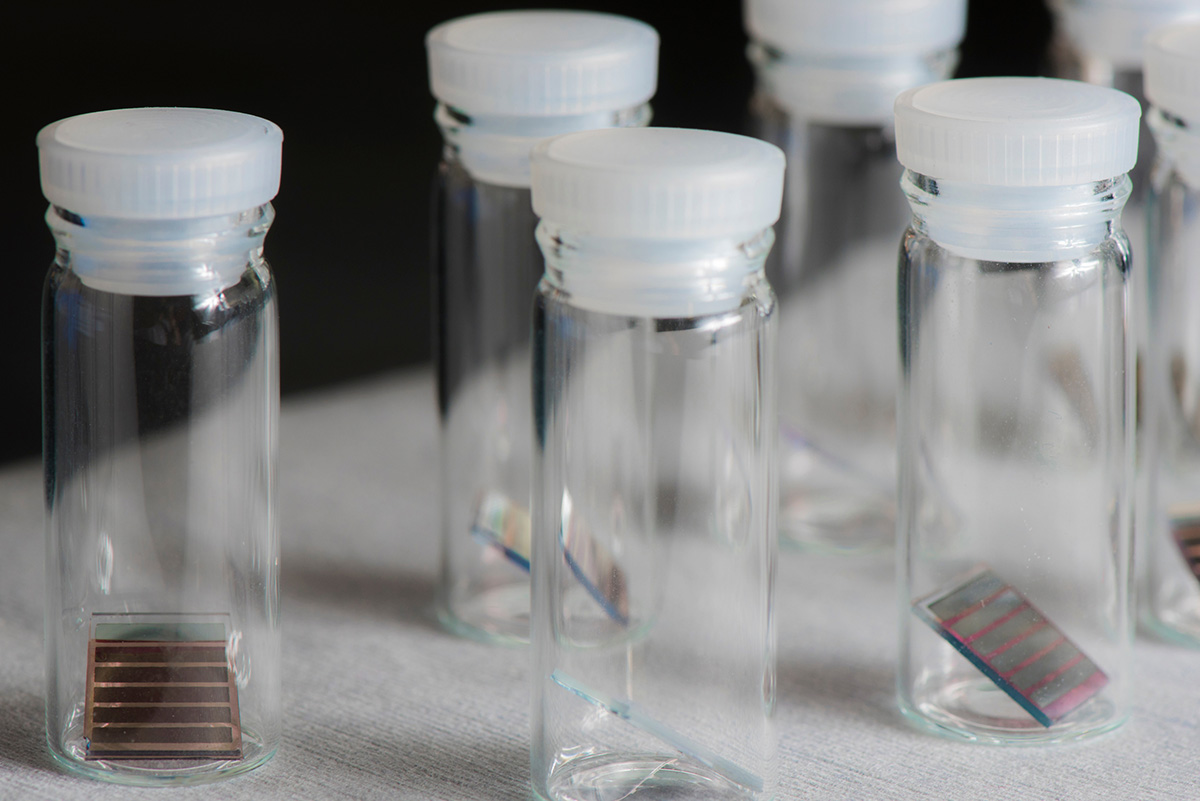
The forecast is looking sunny: UAlberta chemists explore techniques to build next generation solar cells. Credit: John Ulan
As the sun rises on the longest and lightest day of the year, some of the world's brightest minds in fundamental research are reflecting on recent advances in solar energy conversion.
Addressing the continual increase in demand for energy while minimizing environmental impact requires innovative strategies to optimize the use of renewable resources. In the realm of solar energy conversion, singlet fission--converting a molecular singlet state into two triplet states--offers a realistic route to advance the efficiencies of solar cells beyond that of conventional systems. Singlet fission opens up the possibility of working with organic materials for solar energy capture, typically dominated by more expensive resource-intensive materials such as silicon. Organic materials offer a cheaper and easier way to increase efficiency in solar energy capture.
"Solar energy is by far the cheapest of energy sources. But to do it effectively, the costs have to come down," said Rik Tykwinski, professor in the University of Alberta's Department of Chemistry. "Singlet fission is basically like a two-for-one energy store, doubling the amount of charge you can generate. Increasing the efficiency of organic materials in solar energy capture will be a huge advance. It's a key challenge that has to be solved."
With Tykwinski's new molecules, an interdisciplinary effort between Canada, the United States, and Germany is providing groundbreaking mechanistic aspects of singlet fission allowing for the use of organic materials in solar energy capture. The group's new discovery is just the latest in an increasing lineup of solar energy advances coming out of the University of Alberta Department of Chemistry.
In addition to Tykwinski's work with singlet fission and organic solar cells, a number of his UAlberta chemistry colleagues are pushing the boundaries of knowledge of our fundamental understanding of solar energy capture to fully harness the power of the sun. Vladmir Michaelis is working with hybrid perovskites to develop non-traditional and more efficient solar cells. Jillian Buriak, Canada Research Chair in Nanomaterials for Energy, is working with increasing efficiency and decreasing the size of inorganic silicon-type solar cells.
"It speaks to our societal need for solar energy," said Tykwinski of he and his colleagues work. "Solar energy is still, in many ways, an area of fundamental research. We are not all necessarily trying to solve the same chemistry problem, but we are all taking our own approach to finding a way to move the field forward. And we have outstanding infrastructure and students, which are allowing us to do this. The potential for discovery here is great, so we are willing to tackle challenging problems in competitive areas."
Tykwinski's work on singlet fission is being supported by NSERC and the John R. Evans Leadership Fund. Evidence for Charge-Transfer Mediation in the Primary Events of Singlet Fission in a Weakly Coupled Pentacene Dimer appeared in a recent issue of Chem, a peer-reviewed Cell Press journal.